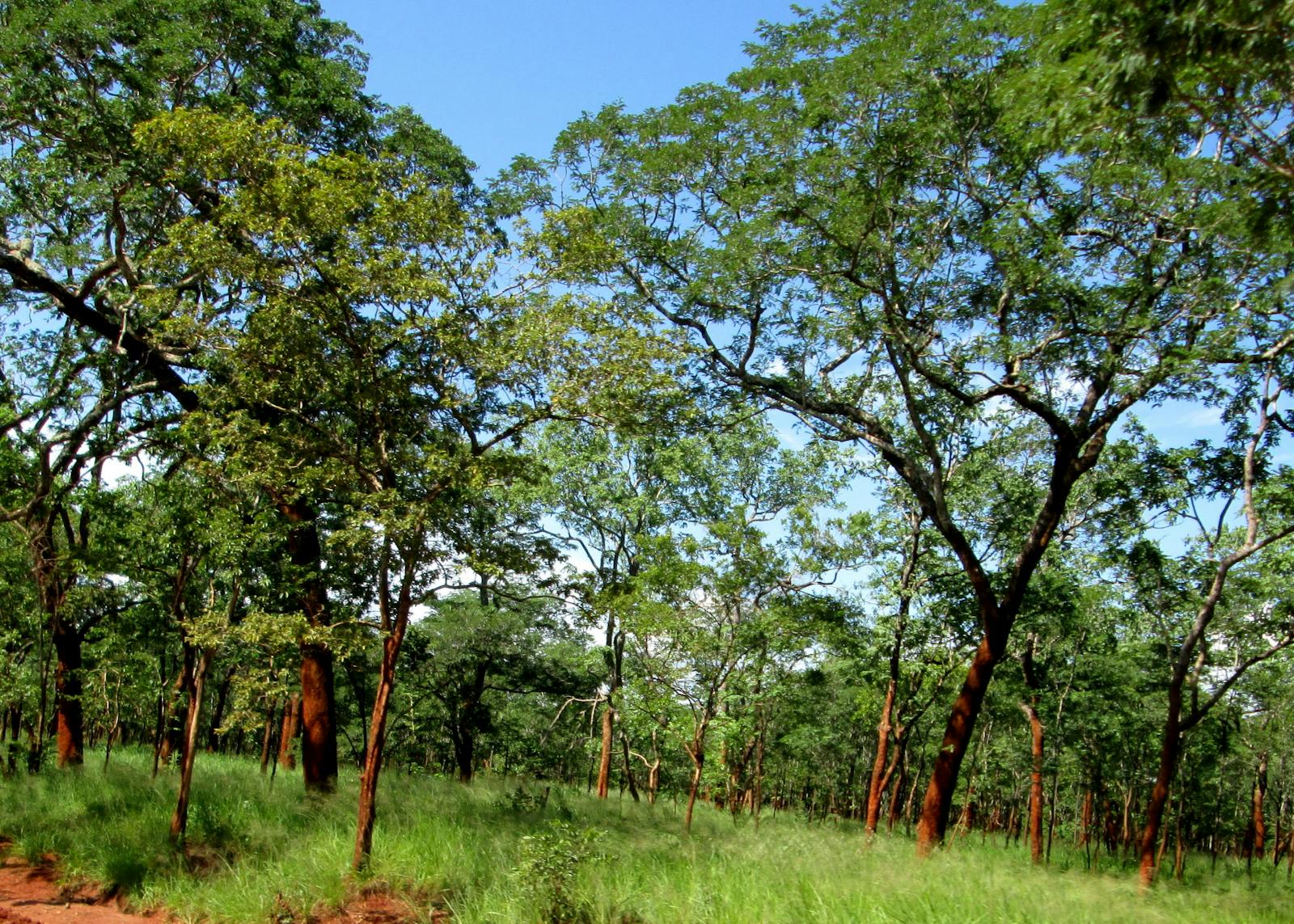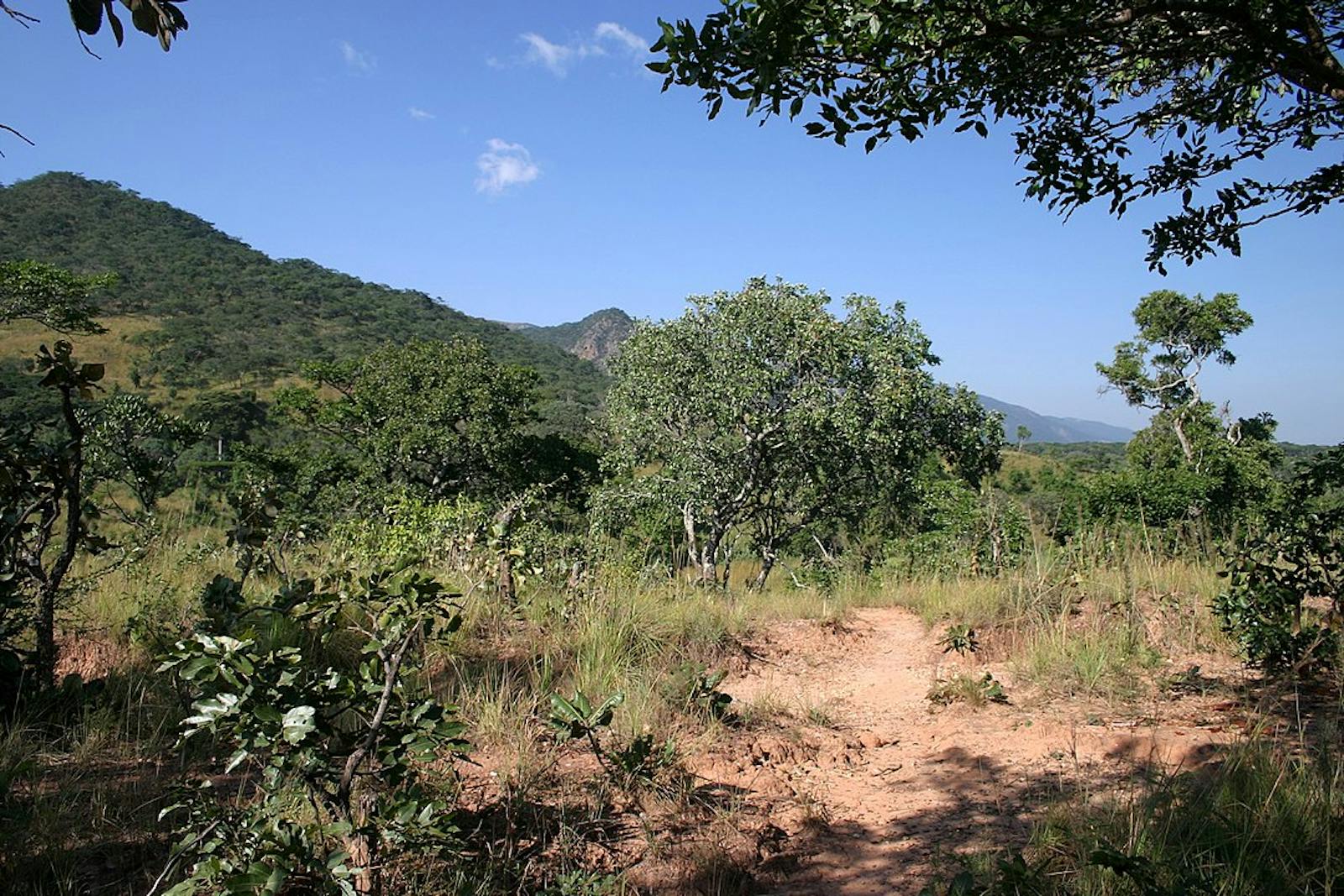Dry Miombo Woodlands
The ecoregion’s land area is provided in units of 1,000 hectares. The conservation target is the Global Safety Net (GSN1) area for the given ecoregion. The protection level indicates the percentage of the GSN goal that is currently protected on a scale of 0-10. N/A means data is not available at this time.
Bioregion: Greater African Subequatorial Savannas & Mixed Woodlands (AT11)
Realm: Afrotropics
Ecoregion Size (1000 ha):
119,264
Ecoregion ID:
42
Conservation Target:
37%
Protection Level:
7
States: Malawi, Mozambique, Tanzania, Zimbabwe, Zambia, Angola
Spurred on by the high demand for ivory in Asian nations, particularly China and Thailand, a multimillion-dollar illegal trade has developed, said to rival that of drug trafficking, and this is the poaching of elephants for their ivory. The Ruvuma landscape of northern Mozambique and southern Tanzania is recognized as a poaching hotspot. In the Selous game reserve, the largest game reserve in the world, poaching levels are particularly high, and in the Selous-Mikumi ecosystem, elephant numbers decreased from 70,406 in 2006 to 15,217 in 2014.
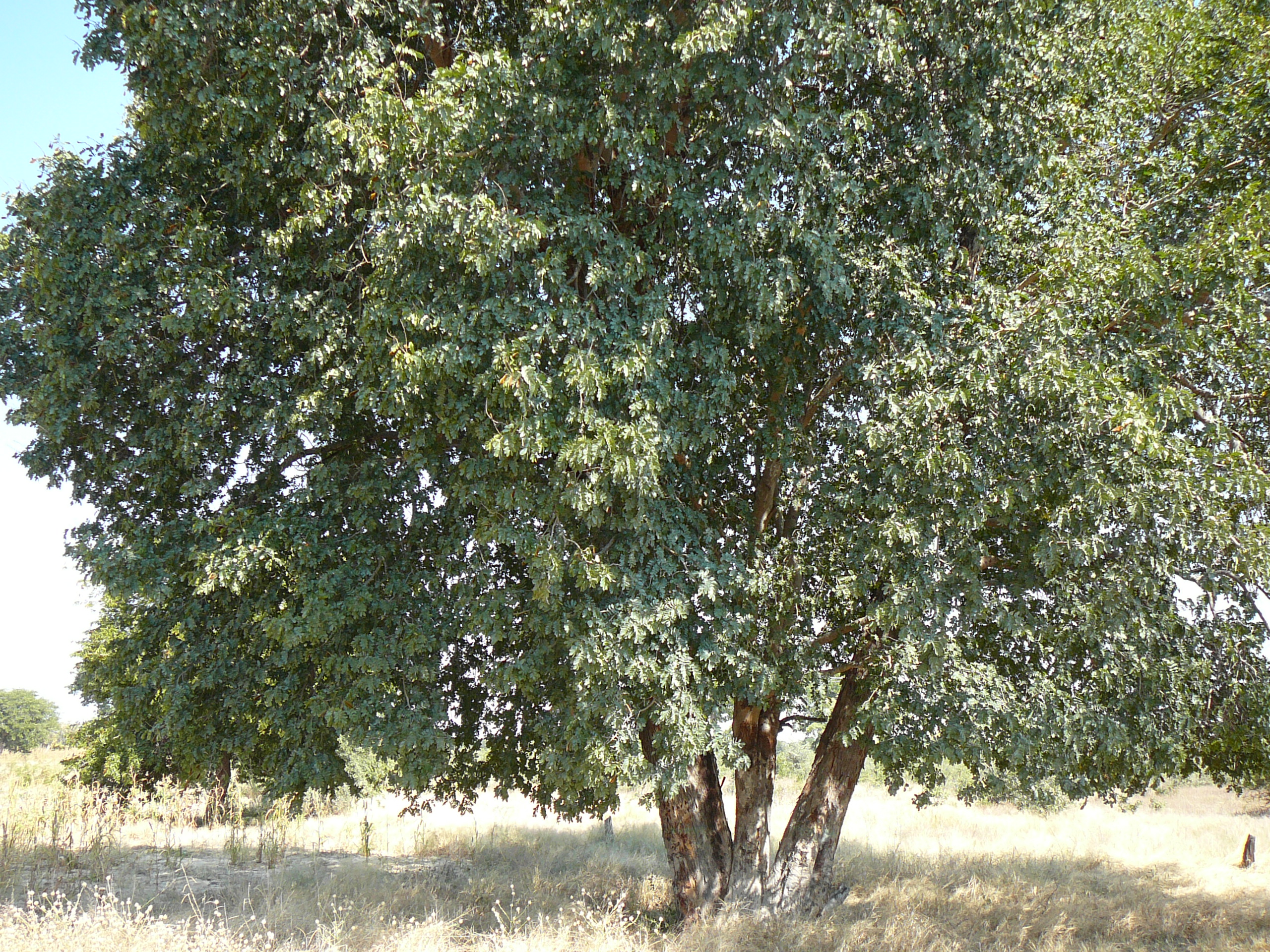
The flagship species of the Dry Miombo Woodlands ecoregion is the African teak (Baikiaea plurijuga). Image Credit: Wiki Creative Commons.
The ecoregion includes miombo woodlands in central Tanzania, down through Mozambique, with a few patches extending into southeastern Malawi and southern Mozambique, as well as extending across the Central African Plateau over central Zimbabwe and southern Zambia, and a large area of southwestern Angola.
The region has a variable topography; parts are flat or undulating plains, but much of the Zambian portion covers the rugged country, and intrusive granites and gneisses frequently rise above the woodland as rounded hills (also known as dwalas) or inselbergs.
The ecoregion experiences a seasonal tropical climate, and most rain falls in the hotter months from November through March. Little rain falls in the cooler dry season, which can last up to 6 months. Mean annual rainfall ranges between 600 and 1,000 millimeters (24-39 in). Mean maximum temperatures range between 18°C and 30°C (64-86°F) depending on elevation, and the mean minimum temperatures are between 9°C and 21°C (48-70°F), with frost occurring at higher altitudes.
Miombo woodland is mostly dominated by the subfamily Caesalpinioideae and is characterized by Brachystegia and Julbernardia species, especially B. spiciformis and J. globiflora. Other common tree species include Uapaca kirkiana, B. boehmii, Monotes glaber, Faurea saligna, and Combretum molle. In Angolan Miombo, J. paniculata, Copaifera baumiana, B. gossweilerii, B. wangermeeana, Guibourtea coleosperma, and Isoberlinia angolensis are locally dominant. Trees associated with these dominants include members of the genera Afzelia, Burkea, Erthrophleum, Ficus, Monotes, Ptercarpus, Swartzia, Uapaca, and Xeroderris.
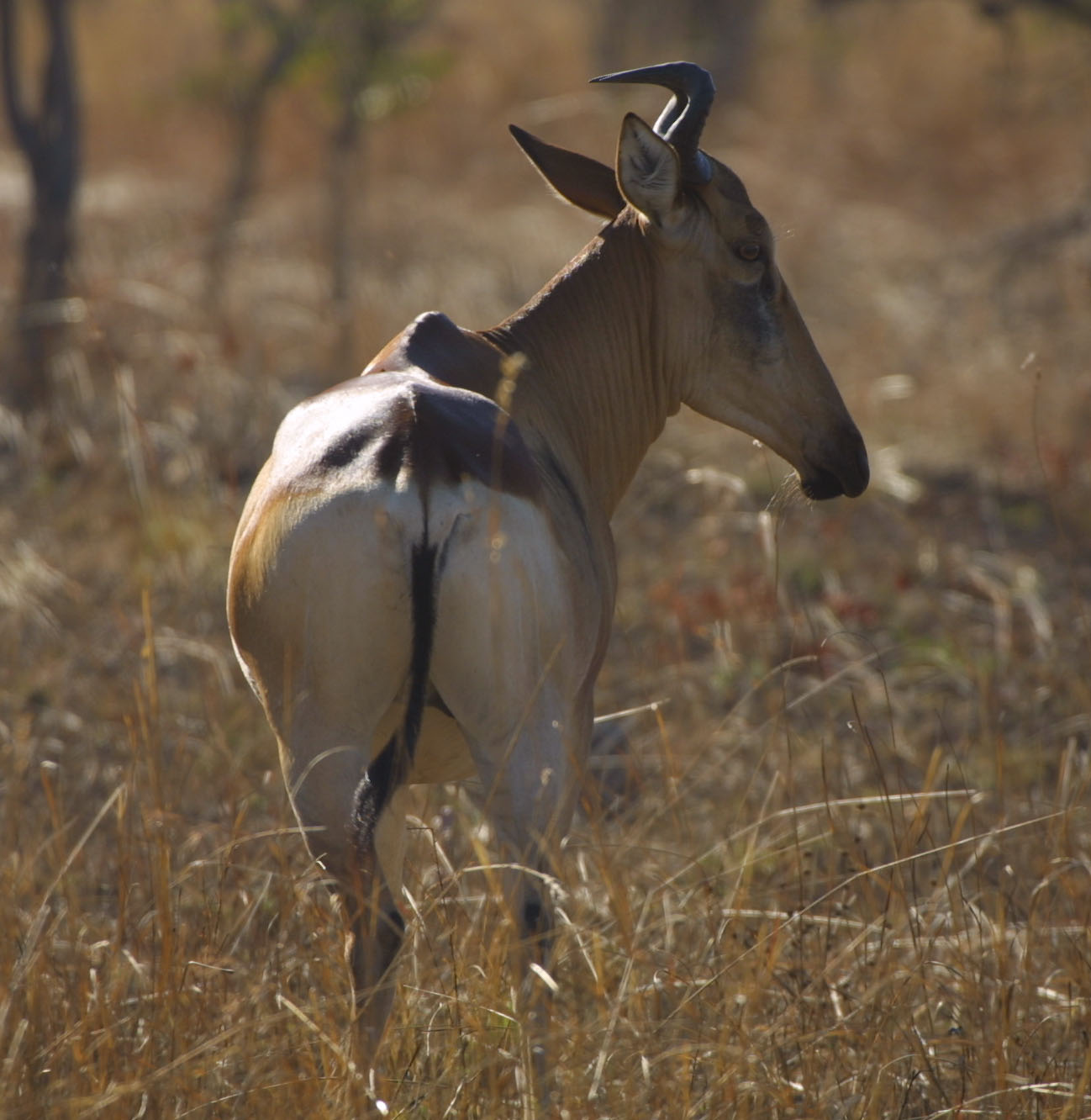
Lichtenstein's hartebeest (Alcelaphus lichtensteinii). Image Credit: Paul Maritz, Wiki Creative Commons.
This ecoregion is a part of the Zambezian center of plant endemism. Most plant species in this ecoregion are widespread, and rates of local endemism are low. The endemic Turner’s cycad is found on some of the inselbergs in northern Mozambique. The species diversity of mammals in the ecoregion is high, but endemism is low. Characteristic miombo mammals include the sable antelope, Lichtenstein’s hartebeest, and common duiker.
More widespread mammal species are African buffalo, greater kudu, African elephant, eland, Sharpe’s grysbok, black rhinoceros, and Burchell’s zebra. Large carnivores include lion, leopard, spotted hyena, and the African wild dog. Due to annual droughts and frequent fires, many species are at least seasonally dependent on non-miombo vegetation within or adjacent to the ecoregion to provide food, water, or shelter. While species richness for birds is high in this ecoregion, only Stierling’s woodpecker is near-endemic. Globally threatened species occur in the area: cape griffon, corncrake, and lesser kestrel.
_young_male-CC-Charles%20J%20Sharp-2014.jpg)
Sable antelope (Hippotragus niger). Image credit: Charles J Sharp, Wiki Creative Commons.
Human populations in this ecoregion are low, with some areas virtually unpopulated. This is largely due to the nutrient-poor soils that limit agricultural potential and the widespread presence of tsetse fly, the vector of trypanosomiasis that affects humans as well as their domestic livestock. In Tanzania, the Selous Game Reserve covers 44,000 square kilometers (16,988 sq mi)
The 3,234 square kilometers (1,248 sq mi) of Mikumi National Park in Tanzania is contiguous with the Selous, and both join the Kilombero Game Controlled Area to the west. In Mozambique, there is Niassa Game Reserve and its associated buffer zones, covering 42,000 square kilometers (16,216 sq mi), as well as parts of the Quirimbas National Park. In Zimbabwe, protected areas include Chizarira National Park, Chirisa Safari Area, Matusadona National Park, Charara Safari area, as well as Lake Chivero and Manyame Ramsar site. Zambian protected areas include Lukusuzi National Park, Lower Zambezi National Park, and part of Kafue National Park. In Angola, there is Mavinga National park.
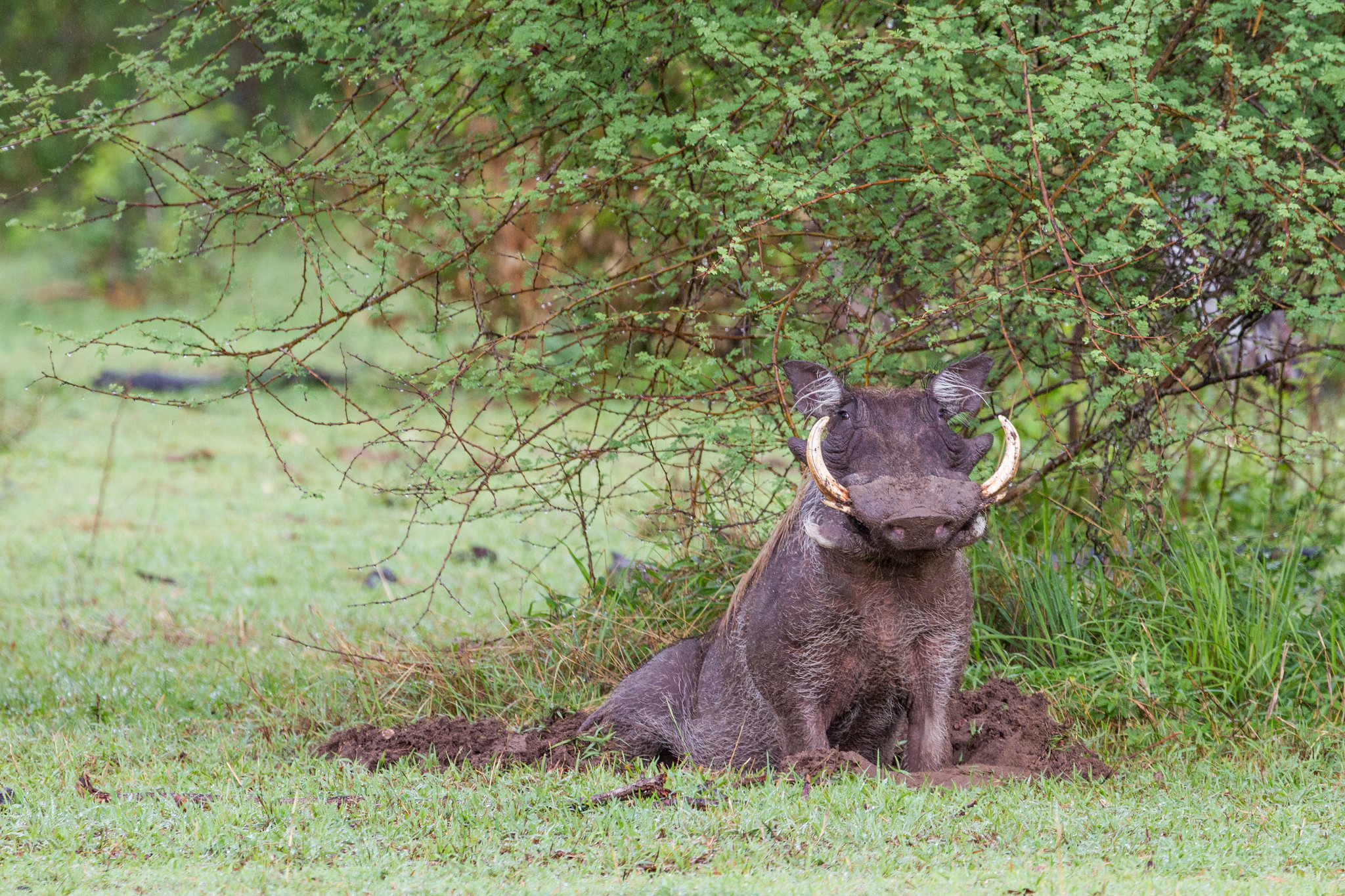
Eastern warthog (Phacochoerus africanus). Image Credit: Courtesy of Gregorie Dubois.
Outside of protected areas, much of the habitat has been converted to low-quality farmland or is degraded through cutting and fire. Fire is a natural ecological factor in miombo woodland, where thunderstorms at the start of the rainy season would have caused miombo fires. However, the increased frequency of fire by people to clear land for cultivation and drive game animals out for easy hunting and the change in its seasonality means that fire is now perceived as a significant threat.
Miombo contains the valuable timber species mninga and African blackwood, which are heavily exploited. Miombo woodlands are also heavily used to supply charcoal to urban centers, particularly to Dar-es-Salaam in Tanzania. Illegal hunting and poaching for bushmeat and ivory pose a threat to the large mammals of the ecoregion, particularly in Niassa National Reserve, where elephant numbers declined from 20,364 to 4,441 between 2009 and 2014.
In Mozambique, elephants are hunted more frequently in hot and dry lowland areas as they aggregate at the few remaining water sources, making hunting them much easier. Black rhinoceros has also suffered catastrophic declines from poaching.
The priority conservation actions for the next decade
1) Improve governance and law enforcement and enhance community awareness to prevent poaching activities.
2) Support community-based natural resource management approaches to improve livelihoods and incentivize biodiversity conservation.
3) Promote the development of community conservation areas outside the protected area network.
-
-
1. Burgess, N., Hales, J.A., Underwood, E., Dinerstein, E., Olson, D., Itoua, I., Schipper, J., Ricketts, T. and Newman, K. 2004. Terrestrial ecoregions of Africa and Madagascar: a conservation assessment. Island Press.
2. Zafra-Calvo, N., Lobo, J.M., Prada, C., Nielsen, M.R. and Burgess, N.D. 2018. Predictors of elephant poaching in a wildlife crime hotspot: The Ruvuma landscape of southern Tanzania and northern Mozambique. Journal for Nature Conservation. 41, pp.79-87.
3. Kyando, M., Ikanda, D. and Røskaft, E. 2017. Hotspot elephant‐poaching areas in the Eastern Selous Game Reserve, Tanzania. African Journal of Ecology. 55(3), pp.365-371.
4. World Wide Fund for Nature. 2012. Miombo ecoregion “Home of the Zambezi” Conservation strategy: 2011-2020. Harare, Zimbabwe: WWF. -
Cite this page: Dry Miombo Woodlands. Ecoregion Snapshots: Descriptive Abstracts of the Terrestrial Ecoregions of the World, 2021. Developed by One Earth and RESOLVE. https://www.oneearth.org/ecoregions/dry-miombo-woodlands/
-
